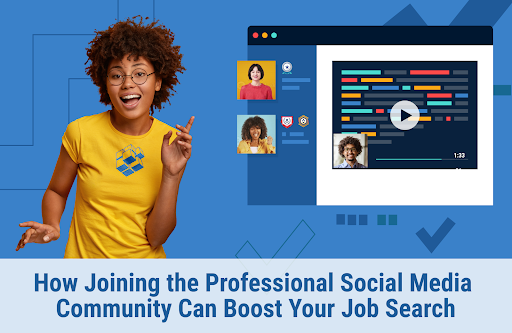Learn to Code Online

First there was the stone age, followed by the bronze, iron, and glass ages. (Yes, glass is an age of industrial development. Who knew?). We also have had revolutions—following millennia of agrarianism, the industrial revolution of the 1700s and 1800s changed the way most people in Europe and North America lived. Then followed the electrical revolution and the information revolution. Today our society stands on the brink of the next big revolution—the digital revolution. Computer programming is the foundation of the coming digital age. Only now, the term used for telling computers what to do is called simply coding. Every time you order a product on a website, post to a social media site, or watch a cute cat video, coding is behind the curtain pulling the levers.
Coding has been around for nearly seventy years. The first commercially available programming language was FORTRAN, developed in 1954. Well, technically, the first programming algorithm was written back in 1843, by a woman named Ada Lovelace. The program was never used, however, because no computers existed at that time. One hundred years later, electronic computers began to appear, but their programs were hardwired into the circuits. With the invention of modern programming languages, computers became general-use machines that could solve any number of problems—provided the programmer understood the problem and knew the right instructions to give the machine.
Today, coding is a giant industry that continues to grow exponentially as we employ computers to do everything from running the International Space Station to telling us we are getting low on milk in the fridge. Coding enables artificial intelligence, data science, robotics, medical telemetry, and every other technological advance you can name.
Jobs for coders are high demand and high paying. Over 1.5 Million software development jobs exist in the U.S. today, and that number will exceed 2 Million in the next decade.
So, what is coding, how do you learn it, and what is the best option for gaining coding skills quickly so you can get into a technology career with a bright future? You have come to the right place. Read on!
What Is Coding?
In its simplest terms, coding is giving instructions (i.e., codes) to a computer in a language the machine understands. A program is a set of instructions that enable the computer to accomplish a task. Coding is a creative process that enables you to see your ideas come to life on a screen or in the physical movement of a robot.
Many coding languages have been developed since those early days of FORTRAN. Like a human language, a programming language has a vocabulary and syntax, meaning a specific way to arrange the elements of the language. While all coding languages have basic similarities, they each have a unique way of expressing an instruction. For example, here is a simple instruction in the Python language:
Print ‘Hello world’
This is a one-line program that causes the words “Hello world” to appear on a computer screen. By stringing together lines of code, a program can enable a computer to perform highly complex and imaginative tasks.
Computer code exists in every digital device you use, from your smartphone to your laptop, from the stereo in your car to the autopilot system in a jetliner. The operating system in every computer, which enables it to boot up and react to programs, is code. The word processing program in which this article was typed is code. So is the website on which you are reading this article right now, as is the video game you will play when you are done reading. It’s all code, and it has all been written by someone who started out with an idea and used code to turn the idea into reality.
How to Learn to Code
Coding is like a foreign language. How do you learn a second language? Well, it depends. A child goes about learning a language conversationally by being immersed in it, observing others speaking the language, mimicking what they hear, and internalizing the vocabulary and syntax subconsciously. Many people are exposed to a second language in school, where the instruction is organized around the rules of grammar and expanding vocabulary in a structured way. Since people do not interact directly through computer circuits (yet—hello, Star Trek fans!), the immersion approach is not feasible. The structured approach is the only viable option.
Most people start learning to code by focusing on one language and learning the elements and syntax of that language. They start out with simple programs, like Hello World. As they study the language, they increase their vocabulary and their understanding of grammar, creating ever more complicated and robust programs. With a firm understanding of their first programming language, coders can usually pick up other languages with relative ease—like learning Italian after you have learned Spanish.
At the core of coding is logic—the ability to organize the instructions in a valid sequence that leads to a specific outcome. A simple example of logic is telling a child how to cross the street:
Step 1 – stop at the corner.
Step 2 – press the button to trigger the crossing signal.
Step 3 – wait for the walk sign to light up.
Step 4 – look both ways.
Step 5 – if the intersection is clear, cross the street.
This process has a logical sequence. Even if you write each instruction correctly, if you jumble the sequence of the steps, you may not get across the street safely. Coding is more than just knowing the language, it is also understanding the logic of the problem to solve.
A common myth about computer programming is that it involves a lot of math. Not true. In fact, most computer programs have nothing at all to do with math. While computers are particularly good at math, they do far more than compute. They process data of all types, most of which are not numerical. If you can do simple addition and subtraction, you can learn to code.
Options for Learning to Code
You learned your native language by listening to others, practicing, trial and error, and getting feedback and correction. It was a slow process, and one that you don’t remember. It is effective to one degree or another for most people, but it is not efficient. In a similar way, you could teach yourself to code by seeing examples, practicing, and hoping for the best. Unlike learning to speak a language, learning to code this way is neither effective nor efficient. Learning to code by Google Search is painful and for some things, impossible.
So, that leaves you with formal instruction. The typical options are:
- College degree – this is a slow and expensive process. An associate’s degree takes two years, and a bachelor’s degree requires four. Aside from the expense and the time required to complete a college degree, much of what you learn is not directly applicable to the workplace. A university’s goal is to educate, not train. Education is great, but training is what you need to get a job.
- Technical school – the flip side of a college degree is a certification from a technical school. In this type of school you get relevant and focused training and typically complete the curriculum in months rather than years. The drawback for most technical schools, however, is that they require you to be physically present in the classroom and in the lab. You may not have a qualified school in your area or one that holds classes convenient for your schedule. Like college courses, tech school courses are structured around a schedule. You cannot drop in and drop out whenever you want.
- Free websites – a version of teaching yourself to code, many websites offer free “courses” to learn how to program. A free website may be light on your pocketbook, but it is not cheap with your time and energy. Most such websites provide no feedback, no help, and no support. Statistics show that fewer than 5% of people who take free courses ever finish them. In addition, potential employers are rarely impressed with a list of no-credit, no-certification, free courses on a resume.
- Online training – if your goal is to receive practical, relevant, certified training in a short time so you can get into the coding job market, an online training program is your best option. Online training avoids the time-consuming and expensive downsides of a college, offers all the upsides of tech school, and none of the disadvantages of free courses.
Conclusion
Choosing the right online training program is critical to your successful pivot into a coding career. You want not only high-quality, professionally developed, industry certifiable training, you want a full menu of support to prepare you for your new career.
RemoteMode offers the best online training, plus more. When you start a RemoteMode program, you get career counselors, mentors, an internship, guidance in developing an effective social network, help with professional resume development, and training and practice in interview skills. RemoteMode provides you with the whole package to get you into a coding job that can blossom into a lifelong career. Look at the list of coding instruction programs RemoteMode offers. Or contact a RemoteMode career counselor to learn how quickly you can learn to code.
Take the first step to your new remote career!






